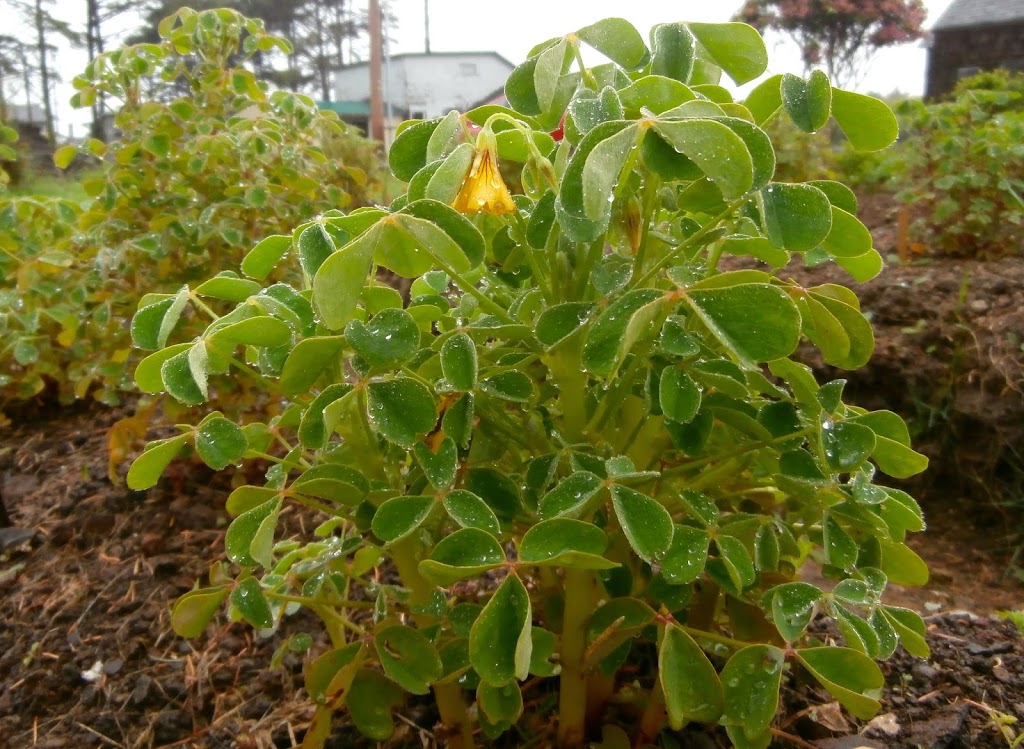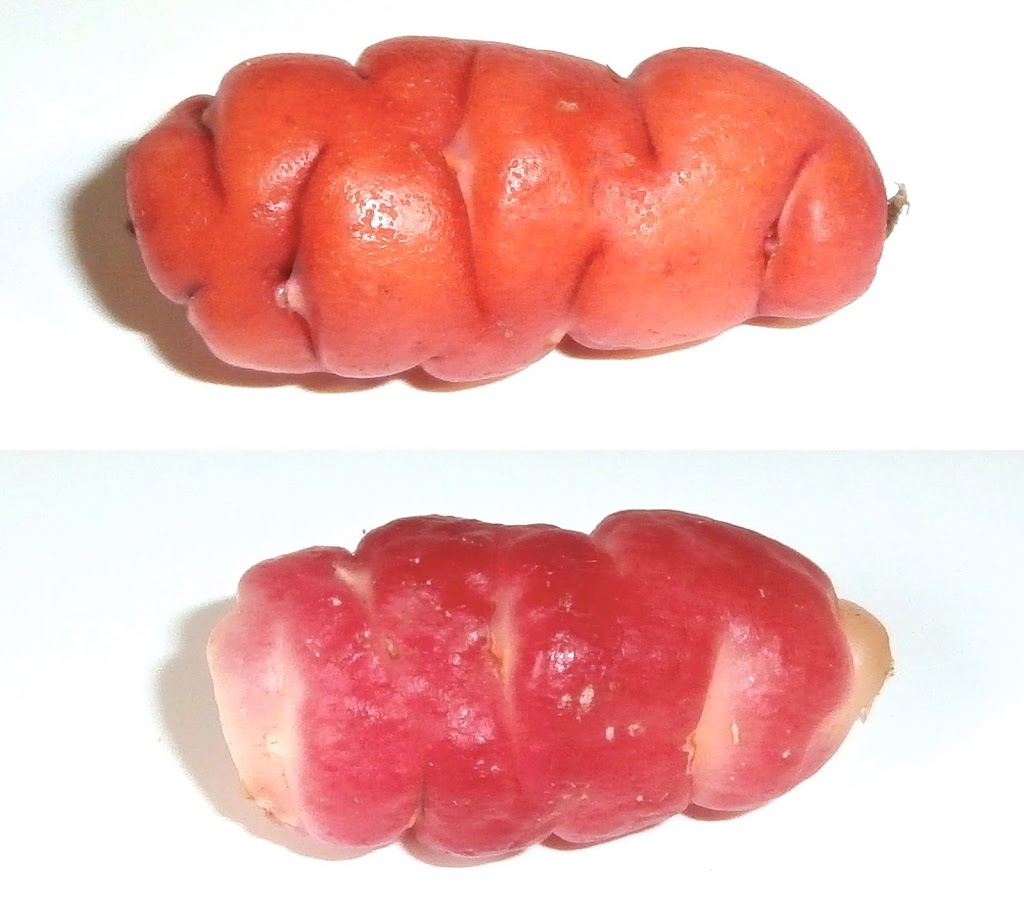Blog, breeding, flowers, oca (Oxalis tuberosa)
Oca: Thoughts on flowering
I’ve had pretty good luck this year getting oca (Oxalis tuberosa) to flower and set seed. I’m growing enough plants to start to perceive some patterns regarding flowering. This information may be helpful to prospective oca breeders, but could also be misleading, based on such a limited period of time.
Climate
I have not grown oca in any other climate, so I can’t tell you with authority where it grows best, other than in the Andes. But, I have only read of people producing seed successfully outside oca’s home range in the UK, Western Europe, and the Pacific Northwest. Oca is apparently unhappy at temperatures over 75 degrees F, but I have read of it surviving short term temperatures into the low 100s and long term temperatures in the 80s. I have no direct experience, because the temperature here rarely exceeds 70 degrees.
 |
| Morning dew on oca plants is a good sign for flowering |
The theory put forth by Ian at Growing Oca is that oca flowers during times of mild temperatures and high humidity and that morning dew is a particularly good sign for flowering. My data point fits that theory, since our temperatures throughout the flowering period have primarily been in the 50s and 60s with humidity of 80% or higher. We have evening fog throughout the summer and rarely see a morning without dew.
At the same time, I believe that too much water also depresses flowering. I have two rows of oca that terminate in a wetland area and the plants at that end have grown huge and look very happy, but produced very few flowers. The plants in the drier areas didn’t grow as large, but set many more flowers. A plant that I gave to my mother, who lives next door but is a chronic over-waterer, has grown to be the largest oca plant that I have ever seen, but hasn’t set a single flower, even though it is a very floriferious variety (Sunset).
So, based on what I have read and seen, I think that a climate with mild summer temperatures, high humidity, and relatively low rainfall is good for oca flowering and seed production. I should also add mild winds, for a couple of reasons. First, in order to keep the plants going without watering a lot, you need to limit transpiration losses; for that, you want high humidity and not too much wind. Second, heavy winds blow flowers and seed pods off the plants. I’ve had some problems with that.
So, mild temps, high humidity, low summer rainfall, and low wind. That is my best guess for an ideal flowering climate.
 |
| Sunset (above) and Hopin (below) The champion flowerers among varieties available in North America |
Variety
The most important factor in getting your oca to flower is having a variety that flowers readily. There are clear differences between varieties in this regard. In my climate, the varieties Sunset and Hopin are clearly superior flowering varieties. Mexican Red and OE Orange are fair. Every other variety is poor (or none). Poor varieties may flower only briefly or at a low and intermittent rate. Since I have about 20 varieties, if I had just picked a couple at random, my odds of having a good flowerer would be low. So, the first step is to make sure you have a variety that flowers well for someone.
Timing
I think that the next most important factor is timing. If what I have written above in the climate section is correct, then the best weather for flowering and maturing seed pods will occur in many places in spring and early summer. Early flowering means more favorable temperatures and less chance of losing seeds to frost. From what I have seen, to get early flowering, you need favorable weather (which you can’t control) and large seed tuber size (which you can).
Plants grown from large tubers put on more early growth and hit the critical mass necessary for flowering to begin. This was illustrated very clearly in my garden this year. Among varieties that have flowered at all, those planted from the largest tubers were the earliest to flower. Plants from the smallest tubers and from cuttings still haven’t flowered in August. So, if you are in the habit of eating the largest tubers and replanting the tiny ones, you are probably greatly limiting flowering. The reports I have seen about flowering in the UK and Europe have been primarily late summer and fall flowering. I wonder how much of this is due to plants getting a slow start in spring.
Chitting the tubers in late winter, growing them in pots indoors, and then transplanting out as soon as the threat of frost is past will also give the plants an edge. Of course, if you live in a place with late frosts, you may never be able to get the plants into the garden soon enough for early summer flowering.
In short, anything that you can do to get big, healthy plants into the ground early in spring probably favors early summer flowering.
Oca seeds and tubers are sometimes available in our seed shop.

I live in Waikanae, near Wellington, New Zealand and have been interested in oca since the early 1970s. They are a regular supermarket vegetable here and have been for decades. I have sometimes had flowers on my plants but mostly not, and haven’t found any reason why. But I will keep your pointers in mind.